Mountain bike versus hybrid: What's the difference? review
Wondering what the difference is between a hybrid bike and a mountain bike and which is best for you? We’ll take you through both these styles of bike.
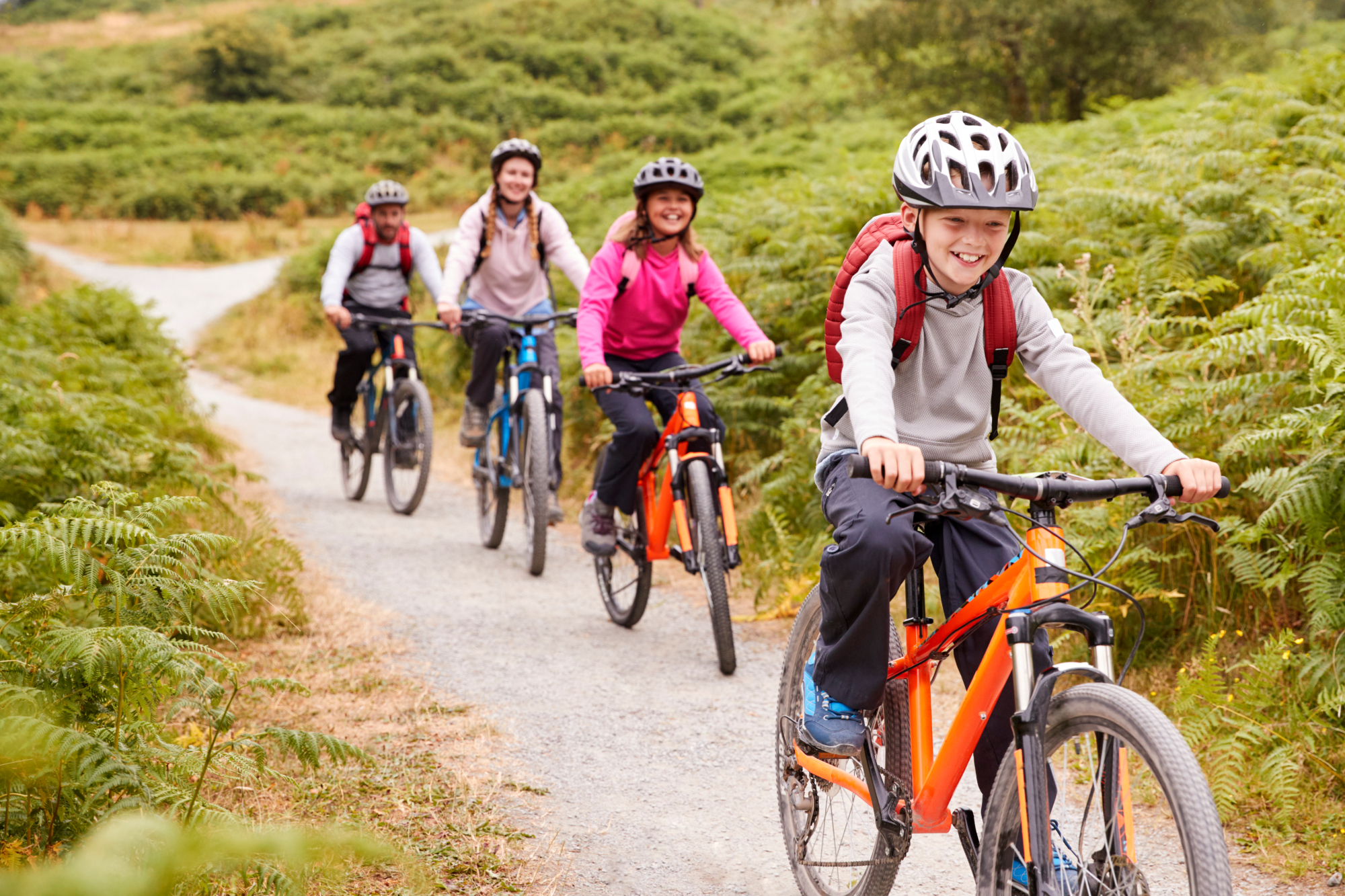
You can trust Cycling Weekly.

On the face of it, hybrid bikes and mountain bikes can look quite similar. Both have flat handlebars, wide tyres, disc brakes - and many hybrid bikes also come with front suspension.
Although hardtail mountain bikes (those without rear suspension) bear some resemblance to hybrid bikes, the riding that they are suited to is a lot closer to that of full suspension mountain bikes than hybrid bikes.
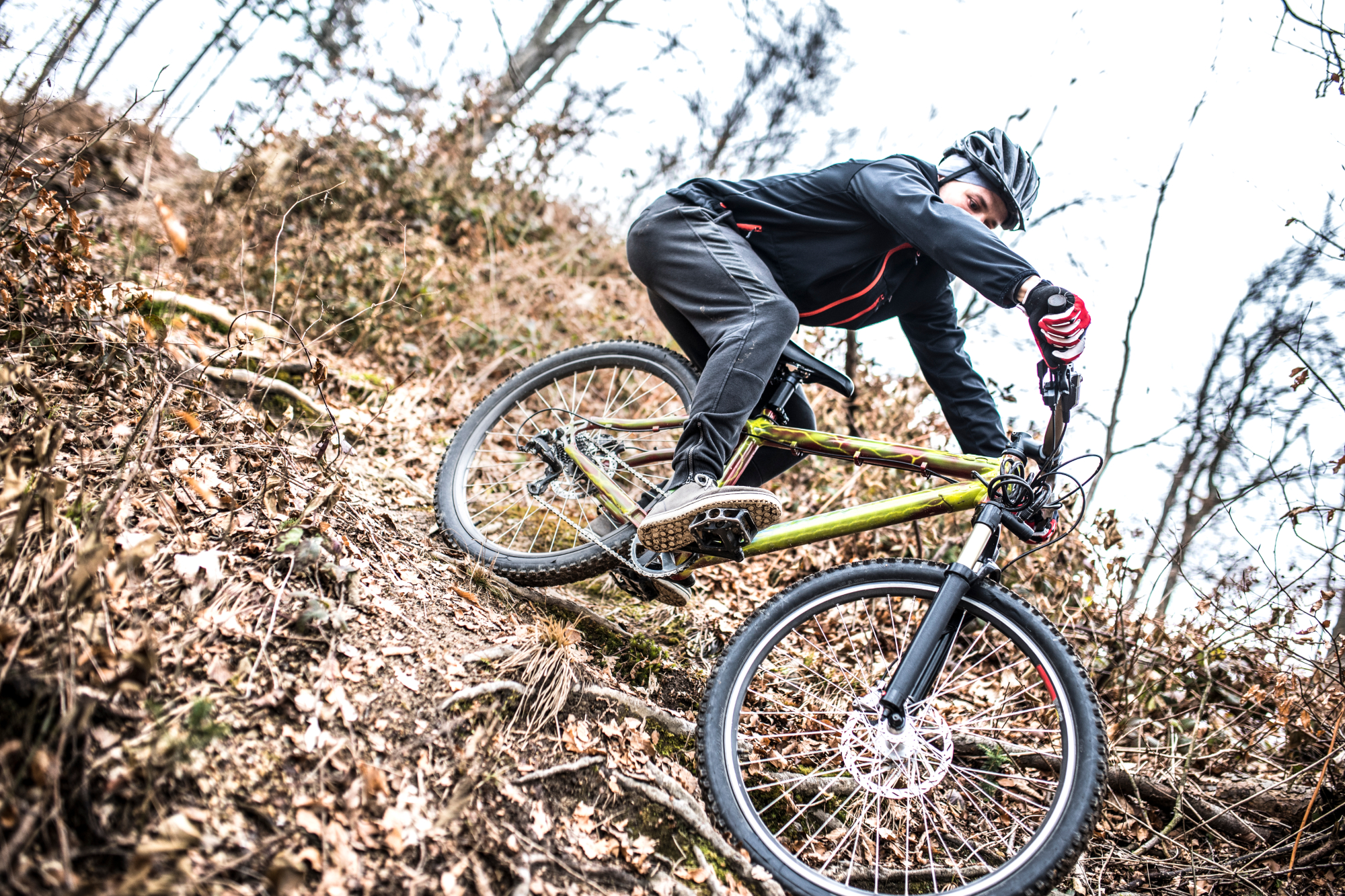
Mountain bikes are designed for tackling steep descents and technical climbs. Roots, berms (steeply banked corners) and sheer drop-offs of around one meter can all be dispatched on a hardtail. This kind of riding can be found in trail centres across the country, but many local woods are also home to this kind of terrain.
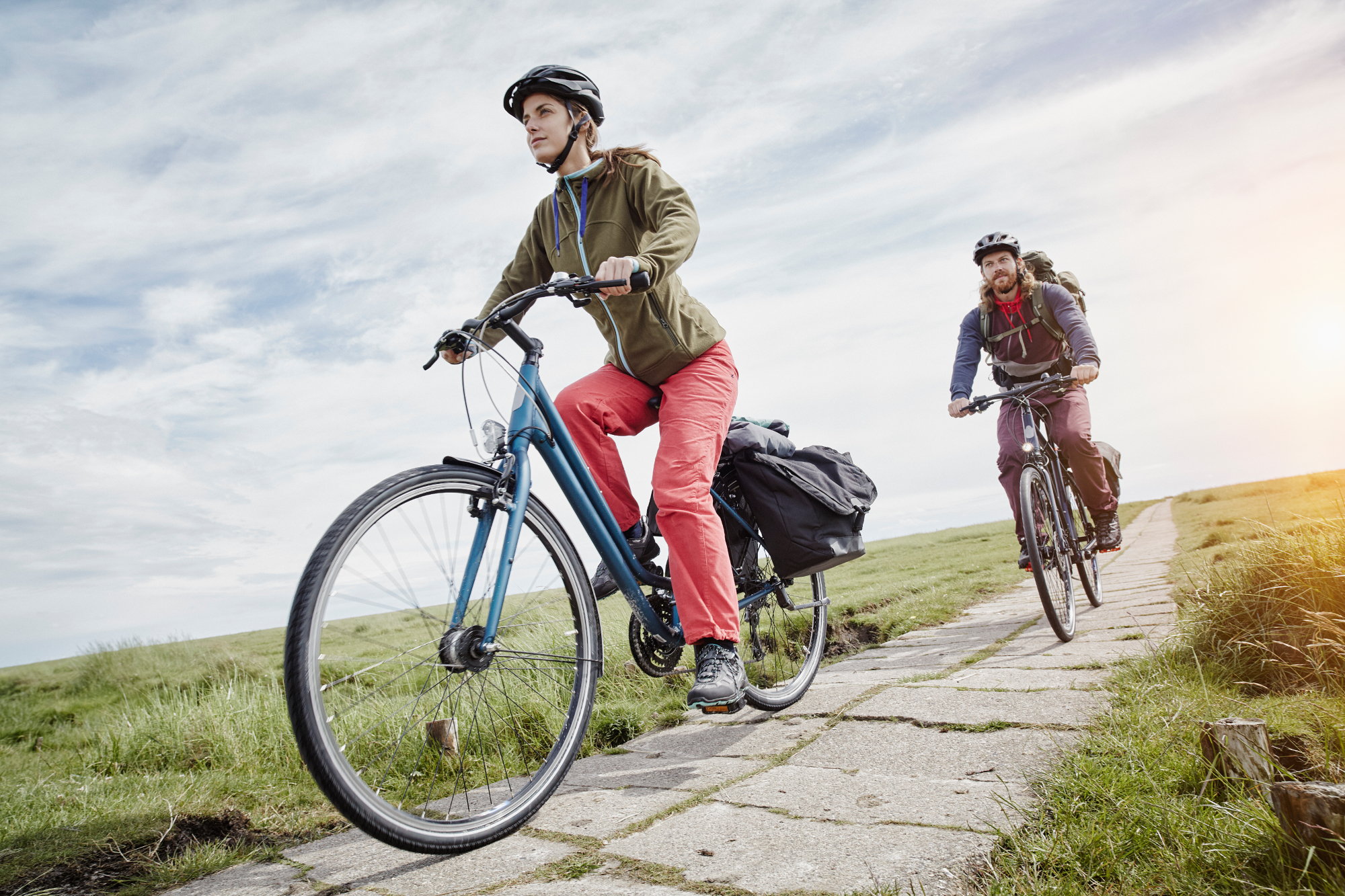
Hybrid bikes are best suited for riding in the city and along canal towpaths or disused railways lines. They are designed to be comfortable and efficient for cycling along broken roads and light trails. Many commuters also opt for this style of bike because of the robust components and ability to mount mudguards and panniers.
>>>Read: Best hybrid bikes: A buyer's guide
If you can only have one bike but want to hit the trails as well as commuting, there's nothing stopping you from using a mountain for multiple purposes. But a hybrid bike will perform better at the type of riding it is designed for.
We'll run you through the many differences between mountain bikes and hybrid bikes and explain exactly what it is that makes them suited for these different purposes.
The differences between mountain bikes and hybrid bikes
Boardman is the in-house bike brand of Halfords and is known for high quality and affordable bikes. The range is quite extensive, including both hybrid bikes and mountain bikes. We'll take a look at their midrange offerings (£500–£650) for an overview of their differences and then take a plunge into the details.
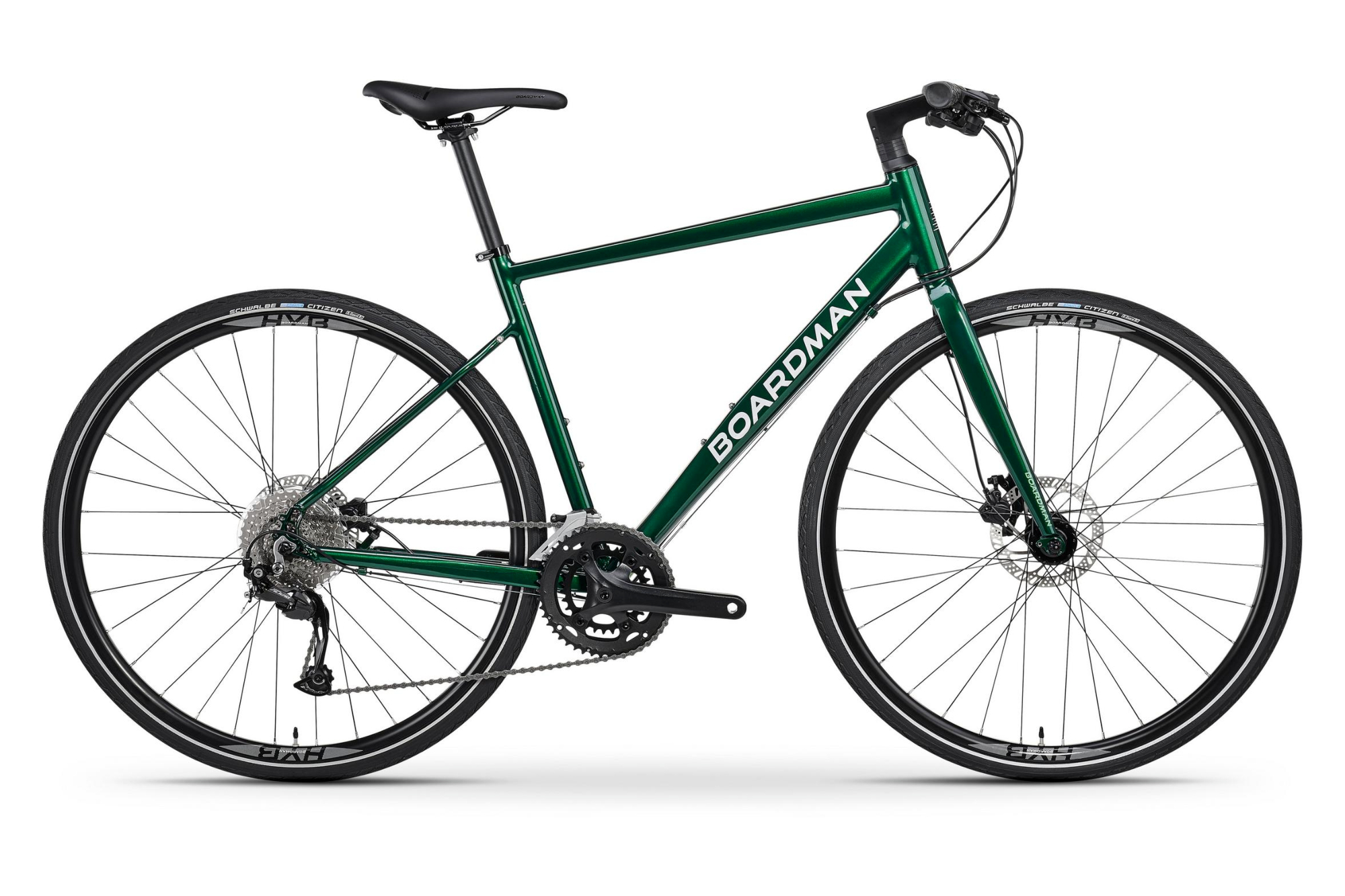
Boardman's HYB 8.6 is an up to date - but typical - hybrid bike. It has flat handlebars and hydraulic disc brakes for controlled steering and stopping. The tyres are 35mm wide, offering a good balance between cushioning and rolling resistance.
The drivetrain is 2x10, offering a wide range of gears, but without massive jumps between them. This means that you're unlikely to find yourself stuck between too hard a gear and one that's too easy. There are mounting points for full length mudguards and a pannier rack, making it easy to carry loads in all weathers, without getting covered in silty water.

Mountain bikes have undergone a lot of development in the last few years and Boardman's MHT 8.6 is no different. Hydraulic disc brakes are ubiquitous as are large tyres; these are 29x2.25 inch for increased grip and a greater ability to roll over obstacles.
A 120mm air suspension fork is specced to better soak up rocky descents and knotted roots. Almost all top end and mid-range mountain bikes come with a 1x (pronounced one-by) drivetrain. By dispensing with multiple chainrings, shifting becomes simpler as you only have to change gear at the rear. And, thanks to cleverly designed chainring teeth, 1x drivetrains all but eliminate dropped chains.
Tyres
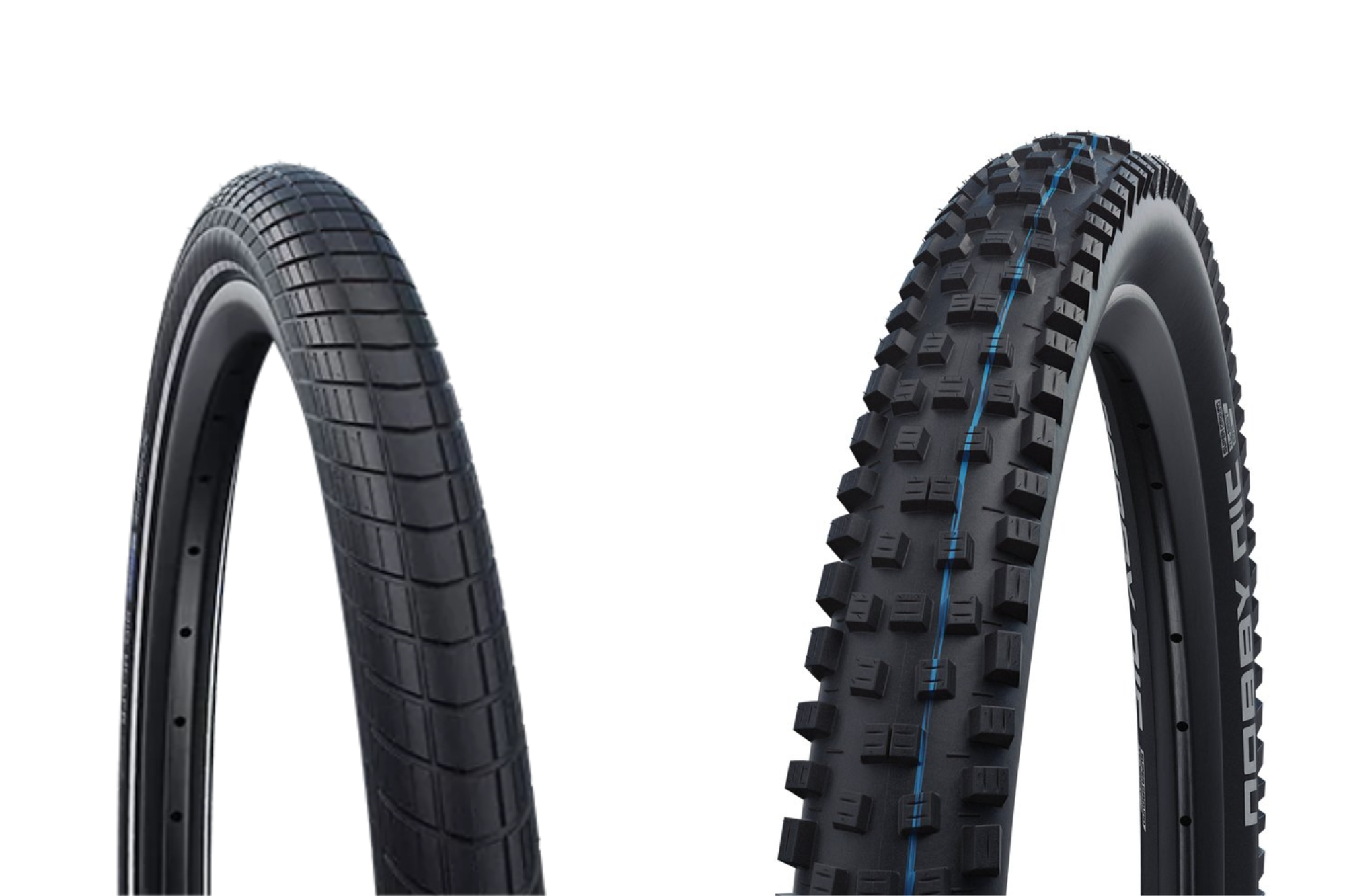
On the left we have the Schwalbe Big Apple - a popular choice for hybrid bikes - whilst on the right is the venerable Nobby Nic, a mainstay of mountain bike tyres.
What’s immediately obvious is that the hybrid tyre is essentially slick, as opposed to the mountain bike tyre which has a far more aggressive tread. This provides mechanical grip on soft trails, where the knobs dig into the dirt to provide traction.
On hard surfaces - such as on roads or hard pack paths - knobs aren’t able to dig in and thus don't provide mechanical grip. In these cases, the type of grip is ‘adhesive’ and is determined by how soft the tyre’s compound is and the size of the contact area.
Due to the extra rolling resistance knobs add - and because hybrid bikes aren’t designed to be ploughed through the mud - slick or semi-slick tyres are what you’ll find on a hybrid bike. They also tend to be narrower than a mountain bike tyre as this too reduces rolling resistance and is also lighter.
Hybrid bikes don’t demand the same levels of grip as a mountain bike and - with narrower, slick tyres - they are a lot more efficient for traveling on roads and light trails. If you do want more grip from your hybrid bike, you’re better off getting a wider tyre than going for one that’s the same size with knobs, as adhesive grip is more important than mechanical for this type of riding.
Suspension
Mountain bikes have suspension for absorbing big hits from drop-offs and roots. This improves control, as the bike isn’t being pinged about in every direction. Many hybrid bikes also come equipped with front suspension, with the aim being to smooth out the bumps and produce a more comfortable ride.
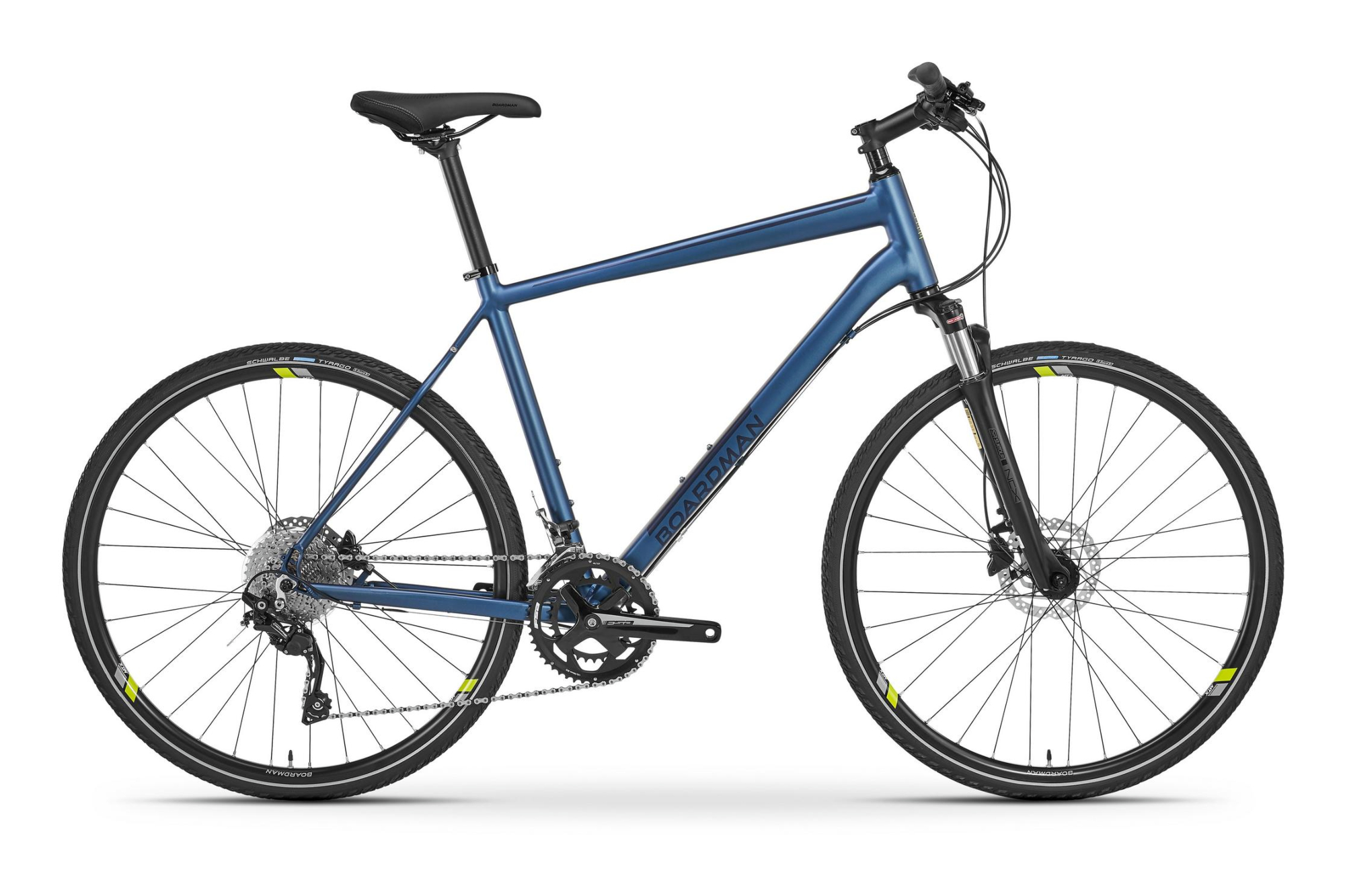
However, suspension on a hybrid bike doesn’t do a particularly good job at its intended purpose. Telescopic suspension forks are notorious for suffering from stiction. This means a large initial force is needed to overcome the static friction of the fork in order for it to start to move through its travel.
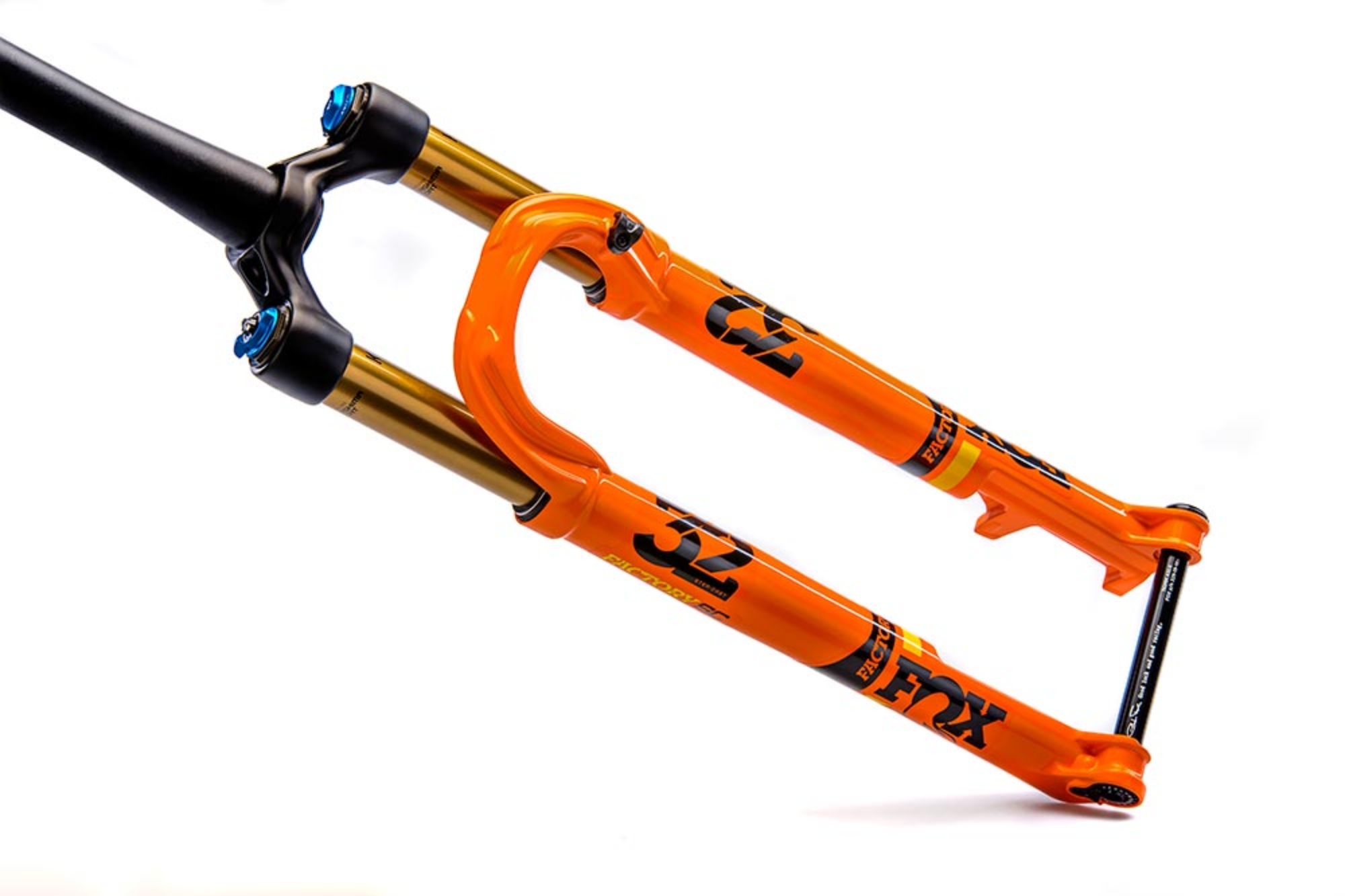
Super high-end forks (costing over £1,000) minimise this issue, but some degree of stiction is always present. Lower end forks, such as the ones that tend to be specced at a mid-range price point, tend to suffer from significant degree of stiction.
This isn’t too much of an issue for mountain bikes, which will be subjecting the forks to large enough hits to get the suspension to move through its travel. But for hybrid bikes and the high frequency - but small - bumps they’ll be hitting, the suspension will barely move and offer little in the way of cushioning.
Wider, more supple tyres combined with lower pressures is a far more effective way to improve comfort when travelling over smaller bumps and potholes. Added to that, without a suspension fork, the bike will be significantly lighter and also cheaper. Meaning you can either save some money or get a bike with better components for the same price.
Geometry
One of the most major differences between a hybrid and a mountain bike lies in the geometry of the frame. It is this that determines the rider’s position on the bike, the way it handles, and just generally, how the bike feels to ride.
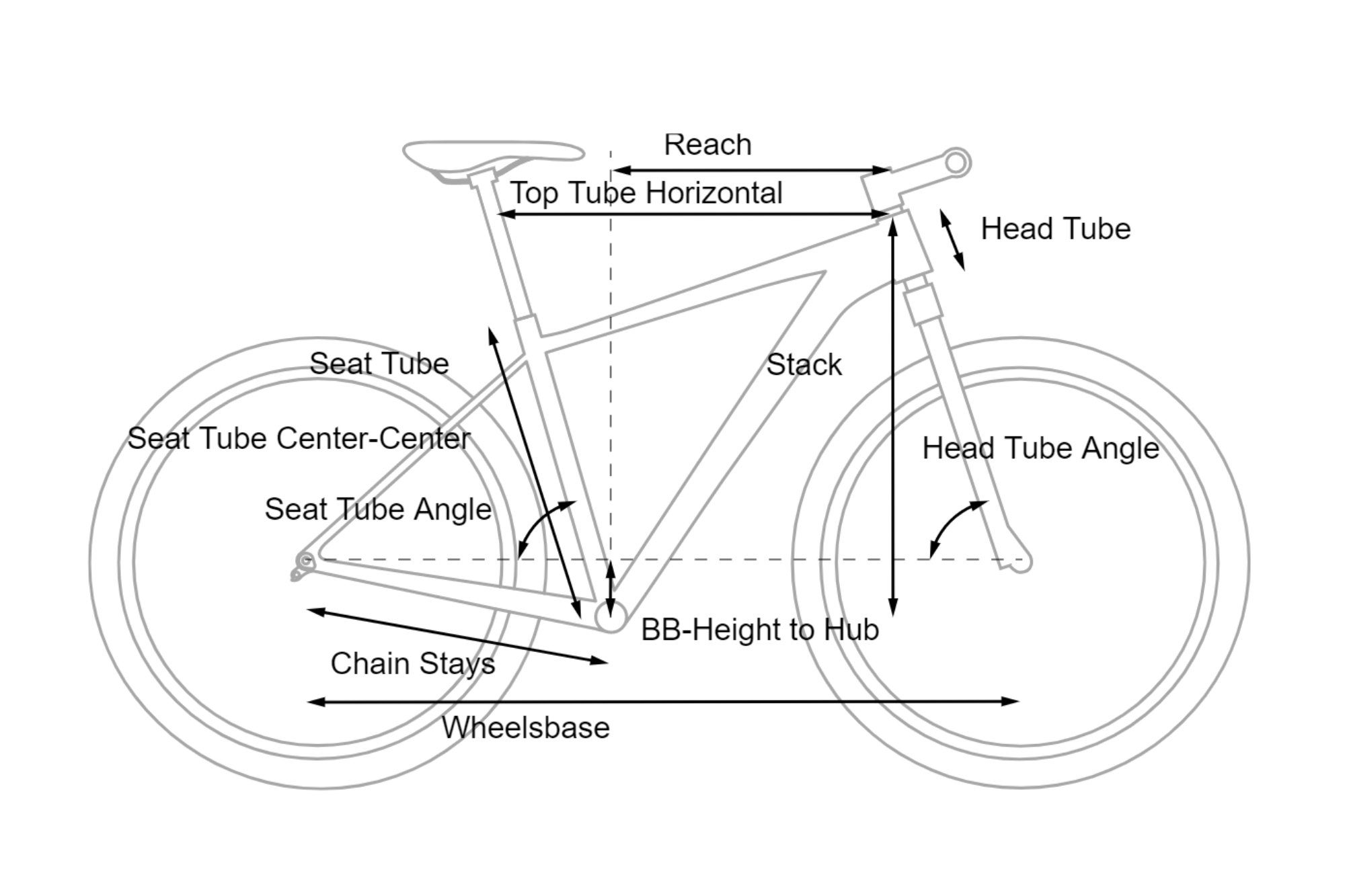
Most of the measurements are different between hybrid bikes and mountain bikes, and it the way all these angles and lengths interact that determines how a bike will feel. Nevertheless, there are some ‘headline’ measurements that stand out as particularly important. A slacker head angle, longer top tube and a lower bottom bracket all combine to make a mountain bike more stable on steep rocky descents, but also improve steering around tight and twisty corners.
Gears
In the past, both hybrid and mountain bikes had triple cranksets, but that has changed now. Mountain bikes (apart from the very cheapest) have all moved over to 1x cranksets, combining only one chainring with a wide range cassette. This gives better chain retention, is makes gear changes more intuitive, and allows frame designers to be more innovative around the bottom bracket because space isn’t needed for a front derailleur and bunch of sprockets.
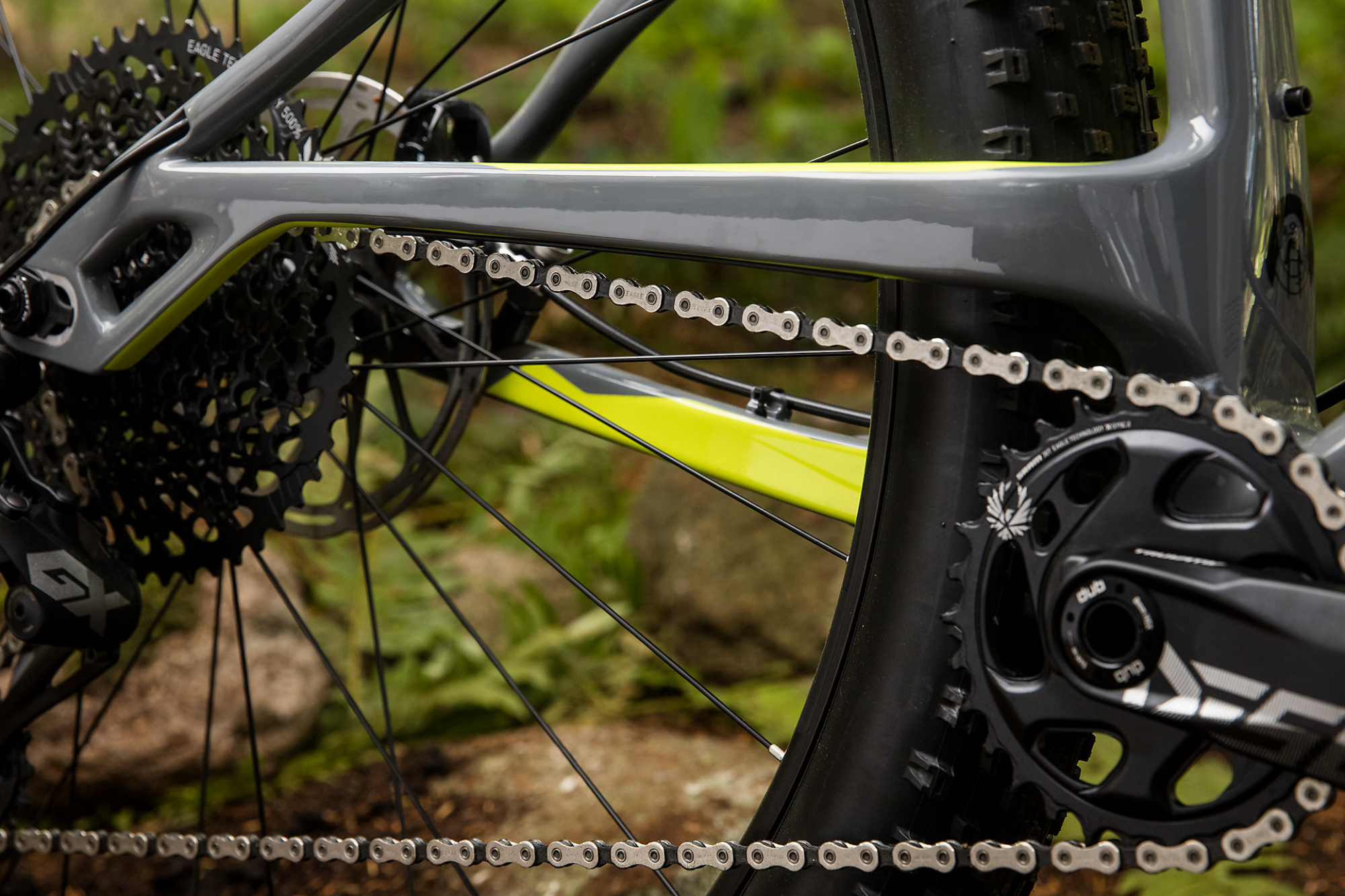
You’re still left with a small enough gear for the steepest of climbs and a large enough one to push the pace on the descents as the cassettes have greatly increase in size. Rather than 8-speed 11–28 tooth cassettes that previously dominated, 10-speed 11–46t and even 12-speed 10–50t cassettes are now common.
Although these cassettes do have fairly large jumps between the gears but this isn’t really a probably with the undulating terrain meaning that you rarely settle into a specific cadence for any length of time.
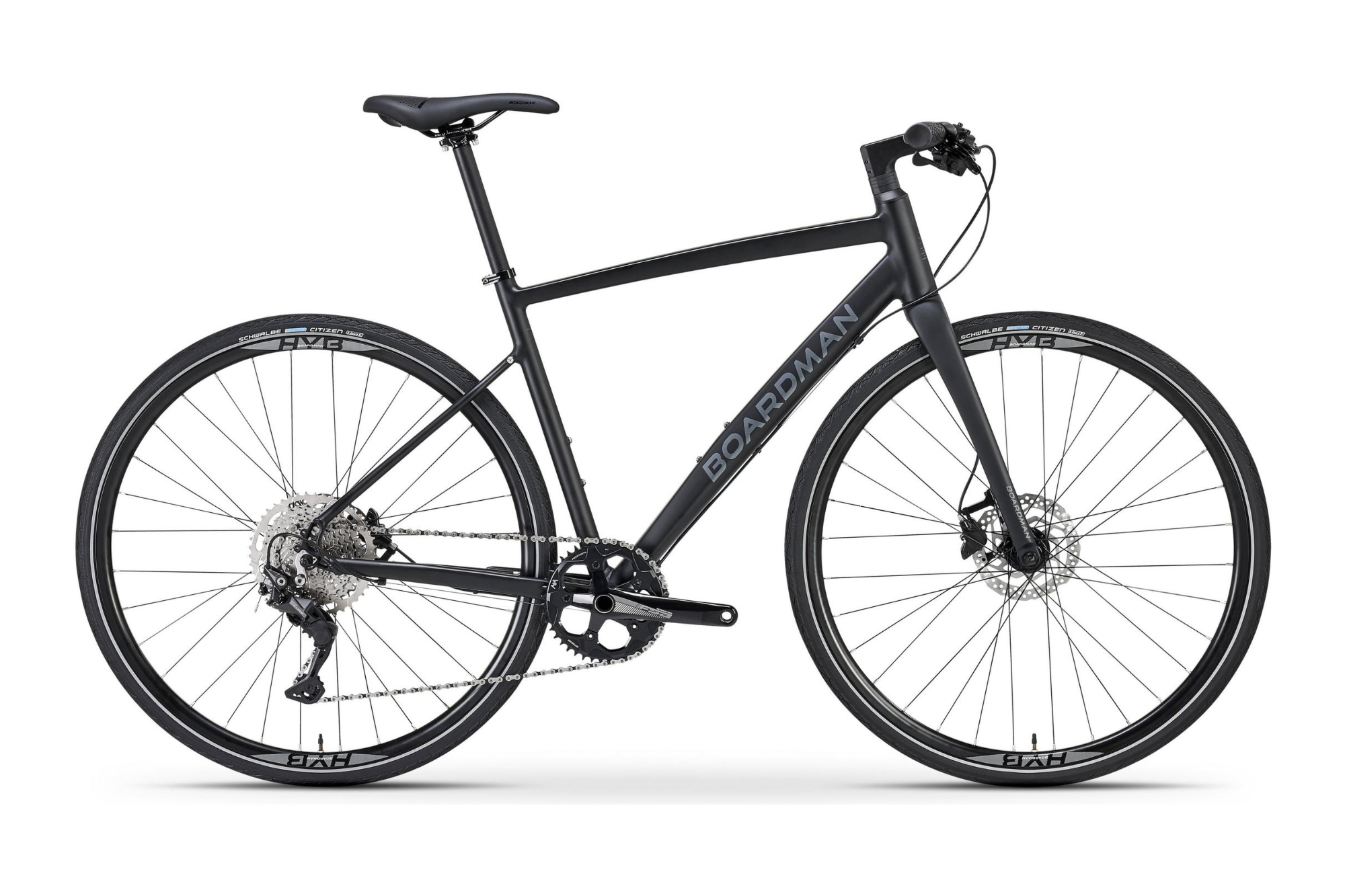
Hybrid bike will tend to use a double or triple crankset to provide a wide range without large gaps between the gears. But increasingly, higher end hybrid bikes are being specced with 1x drivetrains due of the ease of use and maintenance. You don’t have to think about changing gear at the front and there isn’t a front derailleur to go out of alignment and start rubbing on the chain.
Carrying capacity
Lower end mountain bikes will generally have mounting points for a rear mudguard and pannier rack (although none will have mounting points for a front mudguard due to the suspension fork). But once you spend over a certain threshold these will no longer be present, as there is no place for panniers on the trails.
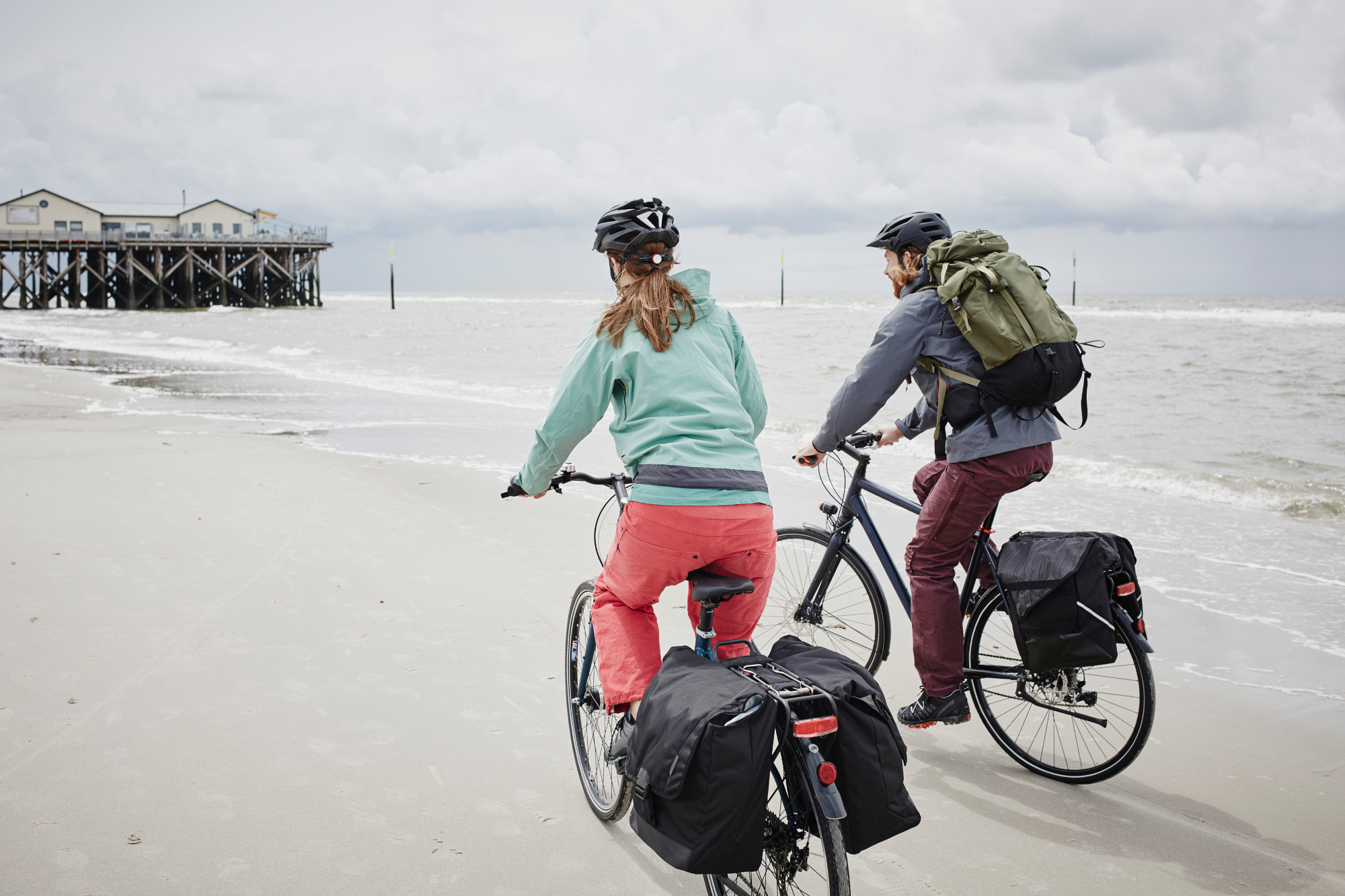
Westend61
Panniers are a great way of carrying weight on the bike. Shoulder straps don’t dig in and you don’t get a sweaty back. For commuting, as well as for carrying what you need on a trip out to the countryside, a hybrid bike with set of panniers is a significant benefit.

Thank you for reading 20 articles this month* Join now for unlimited access
Enjoy your first month for just £1 / $1 / €1
*Read 5 free articles per month without a subscription

Join now for unlimited access
Try first month for just £1 / $1 / €1
Get The Leadout Newsletter
The latest race content, interviews, features, reviews and expert buying guides, direct to your inbox!

Nigel Wynn worked as associate editor on CyclingWeekly.com, he worked almost single-handedly on the Cycling Weekly website in its early days. His passion for cycling, his writing and his creativity, as well as his hard work and dedication, were the original driving force behind the website’s success. Without him, CyclingWeekly.com would certainly not exist on the size and scale that it enjoys today. Nigel sadly passed away, following a brave battle with a cancer-related illness, in 2018. He was a highly valued colleague, and more importantly, an exceptional person to work with - his presence is sorely missed.
-
 'This is the marriage venue, no?': how one rider ran the whole gamut of hallucinations in a single race
'This is the marriage venue, no?': how one rider ran the whole gamut of hallucinations in a single raceKabir Rachure's first RAAM was a crazy experience in more ways than one, he tells Cycling Weekly's Going Long podcast
By James Shrubsall Published
-
 Full Tour of Britain Women route announced, taking place from North Yorkshire to Glasgow
Full Tour of Britain Women route announced, taking place from North Yorkshire to GlasgowBritish Cycling's Women's WorldTour four-stage race will take place in northern England and Scotland
By Tom Thewlis Published
-
 Positive signs for UK bike industry as Halfords cycling sales grow
Positive signs for UK bike industry as Halfords cycling sales growRetailer admits that the impact of Donald Trump's tariffs remains to be seen
By Tom Thewlis Published